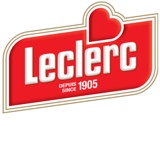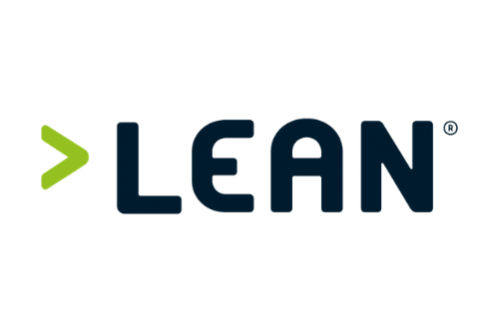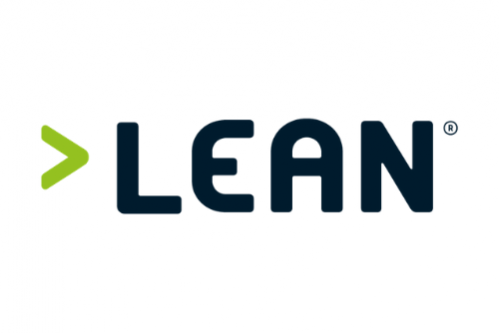Information
-
Audit Title
-
Client / Site
-
Conducted on
-
Prepared by
-
Location
-
Personnel
1.0 - Business Culture
-
1.1 There is a clearly defined and understood mission statement and values in the business.
-
Without clear values and mission statement the staff will have no clear direction or understanding of what the business is trying to achieve. A mission statement which underpins the values and goals of the business should be introduced.
-
1.2 Employees are able to accurately describe the company's objectives and how their job helps the company to achieve those objectives.
-
The organisation's, department's and individuals' objectives should be clearly communicated and deployed.
-
1.3 Employees at every level are empowered to work in groups to address improvements in all aspects of the business ( Quality, Cost, Delivery, Improvement, Safety, Morale, Environment)
-
The business should consider using project teams to tackle main issues, utilising the skills and experience of all employees at regular intervals.
-
1.4 There is good effective communication at all levels in the business? Do they have regular meetings and communicate business information in various ways?
-
More methods of communicating between levels should be considered. Regular shift briefs, notice boards, meetings or news letters could be used.
2.0 - Lean Culture
-
2.1 Does the company have a strategy for Continuous Improvement?
-
Company should consider developing a CI strategy based on the future needs of the business which clearly demonstrates how lean techniques will be used to support these needs and the structure and resources required.
-
2.2 Senior management team has been trained in lean manufacturing and are active in deployment.
-
Formal lean/continuous improvement training should be provided. For senior staff an overview of lean is sufficient to allow them to effectively support lean activities throughout the business.
-
2.3 There is a dedicated champion for continuous improvement in the plant with necessary resources, organisation and infrastructure in place.
-
The organisation should appoint a champion who will be responsible for driving CI activities. The champion should be appropriately trained and should be incentivised on the success of the projects.
-
2.4 Employees have been trained in CI methods and understanding of Lean Manufacturing. Be satisfied by independent questioning of employees.
-
A structured program of training should be developed. Consideration should be given to training champions in formal Lean 6 Sigma qualifications.
-
2.5 Shop floor employees understand common performance metrics to monitor and improve production processes.
-
2.6 Continuous improvement projects are structured, planned and time bound with milestones
-
Detailed plans with clear targets and milestones should be created for all CI activities. These plans should be reviewed with the project sponsor at regular intervals and actions taken when timings are not being achieved.
-
2.7 There are processes in place to solicit the ideas from the work group/employees and recognise the success of these ideas.
-
Consideration should be given to introducing a suggestions scheme with a prize/reward for those ideas which are implemented successfully.
-
2.9 The results of CI activities are communicated throughout the plant.
-
Success should be celebrated and communicated to encourage other employees to participate in future activities. Results of activities should be shared at meetings, on notice boards and in company news letters.
-
2.9 Continuous improvement has been rolled out beyond the shop floor.
3.0 - Data gathering and analysis
-
3.1 Does the company know what to measure and why?
-
3.2 Which of the following metrics is measured by production?
- Overall Equipment Effectiveness
- Value Added Per Person
- People Productivity
- Not Right First Time
- Stock Turns
- Floor Space Utilisation
- Delivery Schedule Achievement
-
3.3 Does the company have a method of using data and problem solving to identify and quantify waste and indicate steps for improvement?
-
3.4 Is data displayed on visual control boards throughout the site and is there support to promote and provide information about these measures? Include evidence of visual controls where applicable.
-
3.5 Enter details here of any projects/improvements which have been carried out in the last 12 months as a direct result of data analysis.
4.0 - 5S and Visual Communication
-
Include photographic evidence here
-
Include photographic evidence here
-
Include photographic evidence here
-
Include photographic evidence here
-
4.5 All employees are considerate of housekeeping and operators consider daily cleaning as part of their job.
-
Include photographic evidence here
-
Include photographic evidence here
-
4.8 Display boards are frequently updated for Quality, downtime and productivity data (target v actual data) Operators receive regular feedback on team performance.
-
4.9 Call signals or lights are used to call for assistance when a problem is encountered by a worker or machine.
-
4.10 Check sheets describe and track the top defects (internal and external) and are posted and updated for each workstation. Each worker is aware of the key quality points and defect history of the process they are doing, samples or photographs are used to represent the standard.
5.0 - Standardised Work
-
5.1 A Standard Operating Procedure (SOP) has been developed for each production process, SOP contain cycle times and process task sequence for each process
-
5.2 SOPs are used to train operators for every production process, show evidence of training log book.
-
5.4 SOPs are in a format that allows ease of understanding and training.
-
5.5 SOPs reflect the most efficient way of completing each process including detailed timings.
-
5.6 Operators provide input and are involved in the process of job design and standardisation.
-
5.7 SOPs are dated, issue controlled and have a clear indication of changes/improvements have been made, why and when.<br>
-
5.8 Frequently repeated, non production operations in the plant are standardised, such as changeover routines and QA equipment checks
-
5.9 SOPs throughout the plant are regularly audited for completeness and adherence.
6.0 - Equipment Maintenance and Asset Care
-
6.1 The maintenance performance is continually monitored
-
Which of the following maintenance metrics are used:
- OEE/Availability
- Mean Time Between Failures
- Response Time
- % Complete
-
Is the data analysed and used to identify and drive improvements?
-
6.2 There are planned maintenance schedules for all key equipment and tools including lubrication plans
-
6.3 There is a managed spare part inventory for each equipment type.
-
6.4 Operators preform simple maintenance tasks according to designated check sheets and standards on a daily basis.
-
6.5 There is an asset replacement program in place detailing when key equipment should be replaced.
7.0 - Quick Changeover (SMED)
-
7.1 Changeover processes have been the subject of detailed process analysis, such as time & motion studies and videotaping.
-
7.2 Changeover times and abnormalities are visibly tracked and countermeasures developed. Include evidence where possible.
-
7.3 Teams have received training in quick changeover procedures and are actively improving methods. Include evidence of training received..
-
7.4 Changeover schedules are communicated in enough time to enable adequate preparation of tools, material and equipment.
-
7.5 As a new changeover procedure is developed it is standardised and replicated in other areas.
-
7.6 All tooling, equipment and materials required for the next production run are prepared as per documented process and located close to the point of use and highlighted when ready.
-
7.7 When not in use all equipment, tools, fixtures are stored in a neat, orderly fashion and are maintained in good working order. Add evidence where possible.
-
7.8 Special tools, fixtures and equipment have been designed to reduce change over time where cost effective. Give examples.
8.0 - Quality and Error Proofing
-
8.1 There is a formalised quality feedback process that allows operators to to receive feedback from both internal and external customers
-
8.2 Defective items are immediately detected when they occur in the production process. Very seldom does a bad part make it to a downstream process or to a customer. Check reject loop and hold areas
-
8.3 A quality system exists to address supplier quality issues in the production process.
-
8.4 Workers understand the basics of error proofing. Question employees and give summary of responses below.
-
8.5 There is a formalised system in place for either production operator or team to analyse defects and identify error proofing opportunities.
-
8.6 Evidence exists to prove error proofing devices have been implemented to eliminate the top production defects for each work area in the plant. Include evidence here.
9.0 - Line Balancing
-
9.1 Is the production balanced to promote single piece flow?
-
9.2 Does the organisation understand the TAKT time for each product/customer?
-
9.3 Does the organisation know the cycle time for each process?
-
9.4 Are all process cycle times within the TAKT time for that product/customer?
-
9.5 Does the operation work on a pull or push system?
- Pull
- Push
-
9.6 Are any Kanban systems in place?
10.0 - Problem Solving
-
10.1 Does the organisation regularly use cross-functional teams to solve problems?
-
10.2 Is the organisation familiar with different types of Root cause Analysis?
-
10.2 What types of Root Cause Analysis are regularly used?
- 5 Why
- FMEA
- Ishikawa/Cause Effect
- Pareto Analysis
- Fault Tree Analysis
- Story Telling Method
-
10.3 What evidence is there to demonstrate where Problem Solving has been used successfully in the past.
SignOff
-
Add signature















